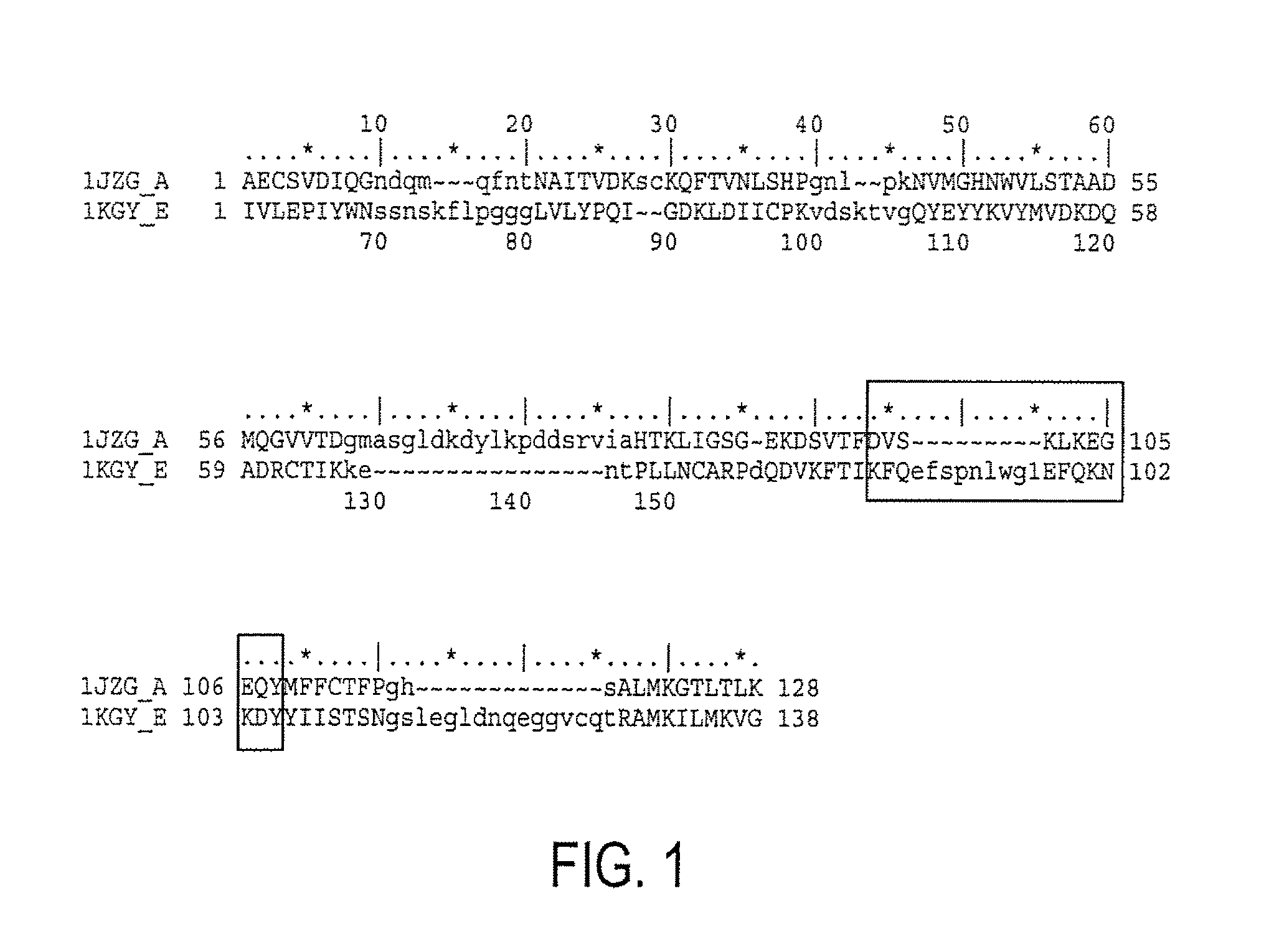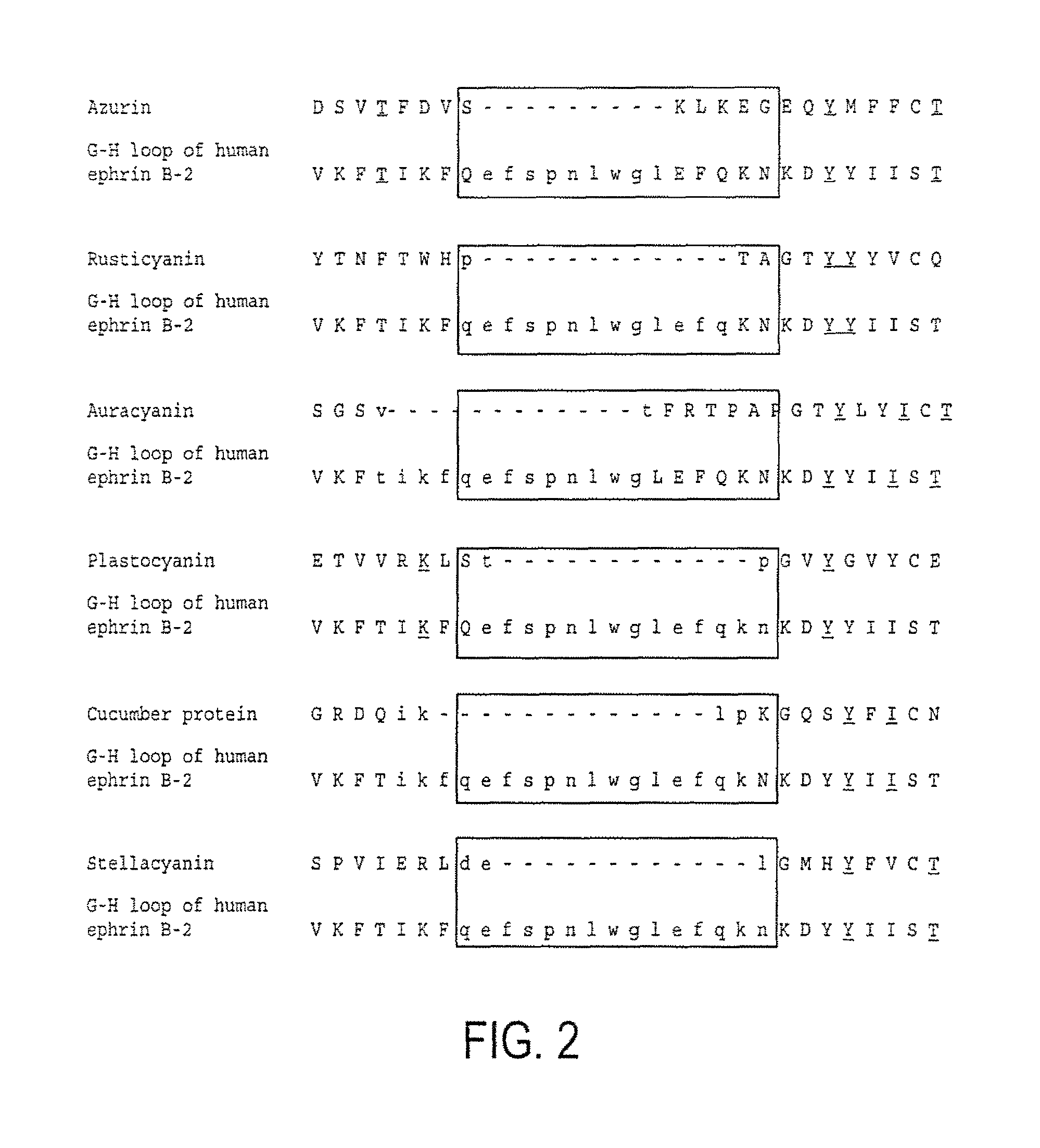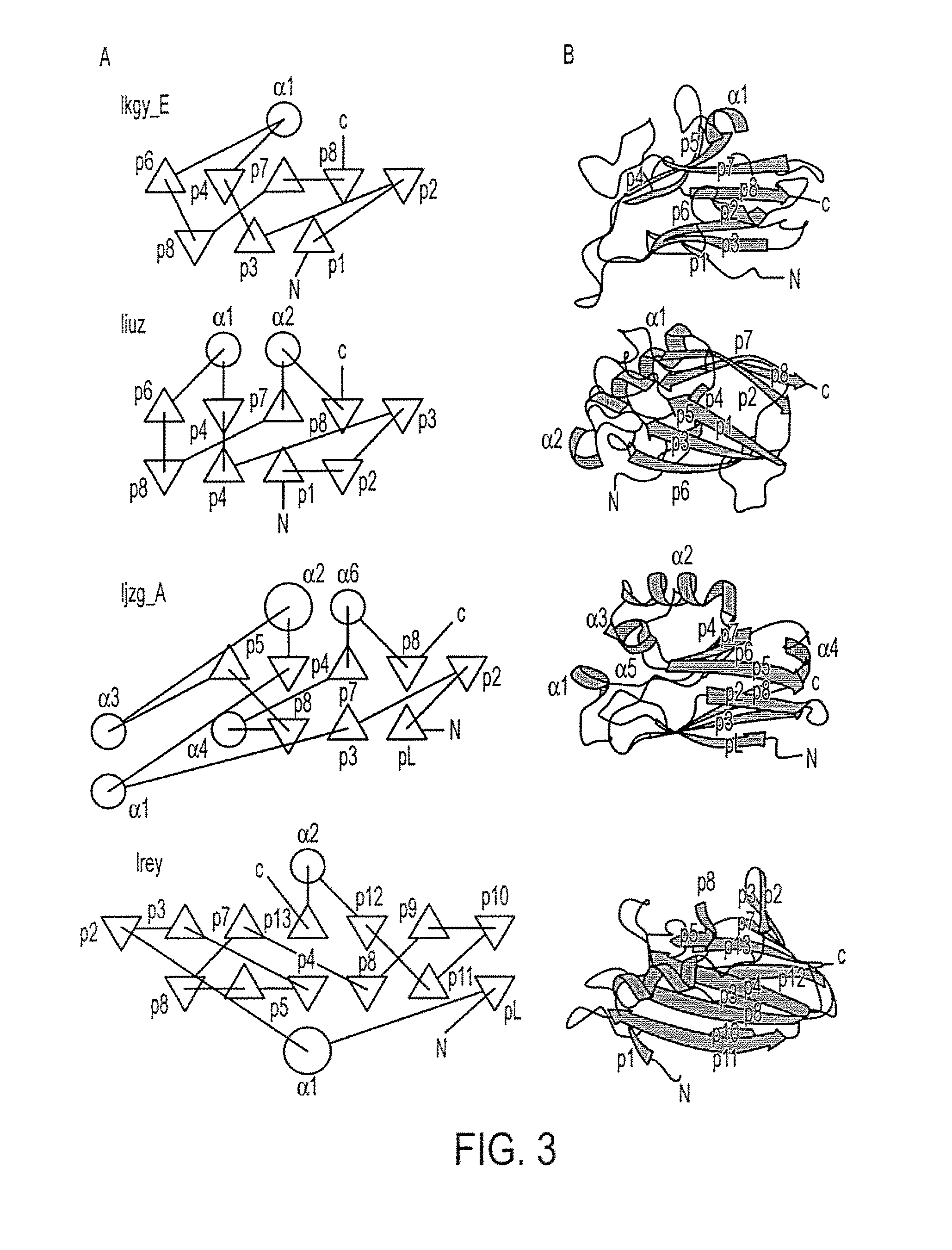Compositions and methods for treating conditions related to ephrin signaling with cupredoxins and mutants thereof
a technology of cupredoxin and ephrin signaling, which is applied in the field of cupredoxins, can solve the problems of non-curative, non-cancerous cells, and often inducing long-term regression
- Summary
- Abstract
- Description
- Claims
- Application Information
AI Technical Summary
Benefits of technology
Problems solved by technology
Method used
Image
Examples
example 1
In vivo Studies of C. elegans Development
[0217]Some ephrins are known in Caenorhabditis elegans to be involved in muscle formation in the tail and embryonic development. Our preliminary experiments indicate that rusticyanin interferes with tail muscle formation (causing paralysis of the tail) while azurin prevents baby birth (embryonic development).
[0218]In these experiments, the azurin and rusticyanin genes were hyper-expressed in E. coli. A control E. coli without azurin or rusticyanin genes was maintained. When C. elegans worms were fed control E. coli for up to 3 days, they were healthy and produced babies. When C. elegans were fed azurin-expressing E. coli, they seemed healthy but produced very few babies. When C. elegans were fed rustieyanin-expressing E. coli, about 30% could only move their heads or upper parts of their bodies but not their tails or the lower part of their body, demonstrating paralysis.
example 2
Azurin Structural Neighbors Analysis
[0219]Protein structure neighbors analysis was determined by direct comparison of 3-dimensional protein structures in the Molecular Modeling DataBase with the Vector Alignment Search Tool (VAST) algorithm (Gibrat et al., Curr Opin Struct Biol 6:377-385 (1996); .Madej et al., Proteins 23:356-3690 (1995)). The Molecular Modeling DataBase contains experimental data from crystallographic and NMR structure determinations and is maintained by the National Center for Biotechnology Information (Bethesda, Md., USA). A program that performs the VAST protein structure neighbors analysis is available through the National Center for Biotechnology Information.
[0220]Azurin showed a significant (Vast P value: 10 e −4.6; Alignment length: 90 aa; % Identity: 6) (FIG. 1), structural superposition with the MMDB (Molecular Modeling Database) entry 1 KGY E (crystal structure of the EphB2-EphrinB2 complex). The superposition alignment of azurin with the referred crystal...
example 3
Efficacy of the Synthetic Peptides Derived From and Plastocyanin
[0222]The efficacy of the synthetic peptides derived from azurin and plastocyanin that are structurally similar to the human ephrin B-2 G-H loop has been analyzed. An 18-mer azurin peptide with the following sequence has been synthesized by standard techniques:
[0223]
TFDVSKLKEGEQYMFFCTSEQ ID NO: 18
[0224]MCF-7 breast cancer cells were incubated in 16-well plates with 5 and 50 μg / ml of the 18-mer azurin peptide for 0, 24, 48 and 72 hours, after which the number of MCF-7 cells were counted in a coulter counter. The peptide was seen at 50 ug / ml to inhibit MCF-7 cell growth by 50% in 48 to 72 hours, as compared to cells without the synthetic peptide treatment. The extent of cell growth inhibition was about 25% at 5 ug / ml of the 18-mer synthetic peptide as compared to untreated control. This experiment shows that the synthetic peptide designed solely on its structural similarity to the B-2 ephrin does in fact inhibit the cance...
PUM
| Property | Measurement | Unit |
|---|---|---|
| flow rates | aaaaa | aaaaa |
| flow rates | aaaaa | aaaaa |
| pH | aaaaa | aaaaa |
Abstract
Description
Claims
Application Information
 Login to View More
Login to View More - R&D
- Intellectual Property
- Life Sciences
- Materials
- Tech Scout
- Unparalleled Data Quality
- Higher Quality Content
- 60% Fewer Hallucinations
Browse by: Latest US Patents, China's latest patents, Technical Efficacy Thesaurus, Application Domain, Technology Topic, Popular Technical Reports.
© 2025 PatSnap. All rights reserved.Legal|Privacy policy|Modern Slavery Act Transparency Statement|Sitemap|About US| Contact US: help@patsnap.com



